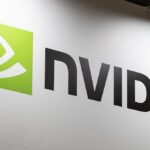
-
Revenue: $35.1 billion, up 17% sequentially and 94% year on year.
-
Data Center Revenue: $30.8 billion, up 17% sequentially and 112% year on year.
-
Gaming Revenue: $3.3 billion, increased 14% sequentially and 15% year on year.
-
Pro-Vis Revenue: $486 million, up 7% sequentially and 17% year on year.
-
Automotive Revenue: $449 million, up 30% sequentially and 72% year on year.
-
GAAP Gross Margin: 74.6%.
-
Non-GAAP Gross Margin: 75%.
-
Shareholder Returns: $11.2 billion in share repurchases and cash dividends.
-
Q4 Revenue Outlook: Expected to be $37.5 billion plus or minus 2%.
-
Q4 GAAP Gross Margin Outlook: Expected to be 73% plus or minus 50 basis points.
-
Q4 Non-GAAP Gross Margin Outlook: Expected to be 73.5% plus or minus 50 basis points.
-
Q4 GAAP Operating Expenses: Expected to be approximately $4.8 billion.
-
Q4 Non-GAAP Operating Expenses: Expected to be approximately $3.4 billion.
-
Q4 GAAP and Non-GAAP Tax Rates: Expected to be 16.5% plus or minus 1%.
Release Date: November 20, 2024
For the complete transcript of the earnings call, please refer to the full earnings call transcript.
-
NVIDIA Corp (NASDAQ:NVDA) reported record revenue of $35.1 billion for Q3, up 17% sequentially and 94% year-on-year, surpassing their outlook of $32.5 billion.
-
Data center revenue reached a record $30.8 billion, with a 17% sequential increase and 112% year-on-year growth, driven by strong demand for NVIDIA Hopper and H200 products.
-
NVIDIA’s AI enterprise revenue is expected to more than double from last year, with a growing pipeline and annualizing software service and support revenue at $1.5 billion, projected to exceed $2 billion by year-end.
-
The company is experiencing significant demand for its new Blackwell GPUs, with plans to exceed previous revenue estimates and ramp up supply to meet customer needs.
-
NVIDIA’s gaming revenue increased by 14% sequentially and 15% year-on-year, supported by strong back-to-school sales and healthy channel inventory.
-
NVIDIA Corp (NASDAQ:NVDA) faces supply constraints in gaming, which are expected to impact Q4 revenue despite strong sell-through in Q3.
-
Gross margins are expected to moderate to the low 70s as Blackwell ramps up, with initial configurations potentially impacting profitability.
-
Networking revenue was sequentially down, despite strong year-on-year growth, indicating potential challenges in meeting demand for networking components.
-
The company anticipates competitive market conditions in China due to export controls, which could affect future data center revenue from the region.
-
There are concerns about potential digestion phases in hardware deployment cycles, which could impact growth as the market adjusts to new technologies.
Q: Can you discuss the debate around whether scaling for large language models has stalled and how NVIDIA is addressing this? A: Jensen Huang, President and CEO, explained that foundation model pre-training scaling is intact and continuing. NVIDIA is helping customers with post-training scaling and inference time scaling, which are driving demand for their infrastructures. The next generation of models starts with 100,000 Blackwells, indicating strong industry movement.
Q: There were reports about heating issues with Blackwell. Can you address concerns about your ability to execute the roadmap with Ultra and Rubin? A: Jensen Huang assured that Blackwell production is in full steam, with more units being delivered than previously estimated. The supply chain is robust, and NVIDIA is on track with its annual roadmap, focusing on performance improvements and reducing AI costs.
Q: How is Blackwell expected to ramp this year, and how will it affect gross margins? A: Colette Kress, CFO, stated that Blackwell will ramp with initial gross margins in the low 70s, improving to mid-70s as production scales. Jensen Huang added that Blackwell shipments will increase each quarter, with significant demand driven by shifts in computing from CPUs to GPUs.
Q: Could NVIDIA recover to mid-70s gross margin in the back half of calendar ’25? A: Colette Kress confirmed that reaching mid-70s gross margin in the second half of next year is a reasonable assumption, depending on the mix of ramp.
Q: Can you provide an update on Sovereign AI demand and explain the supply constraints in gaming? A: Colette Kress noted that Sovereign AI demand remains strong, with growth opportunities in regional clouds and AI factories. Gaming supply constraints are due to fast sell-through and efforts to ramp up supply, expected to improve in the new calendar year.
For the complete transcript of the earnings call, please refer to the full earnings call transcript.
This article first appeared on GuruFocus.





